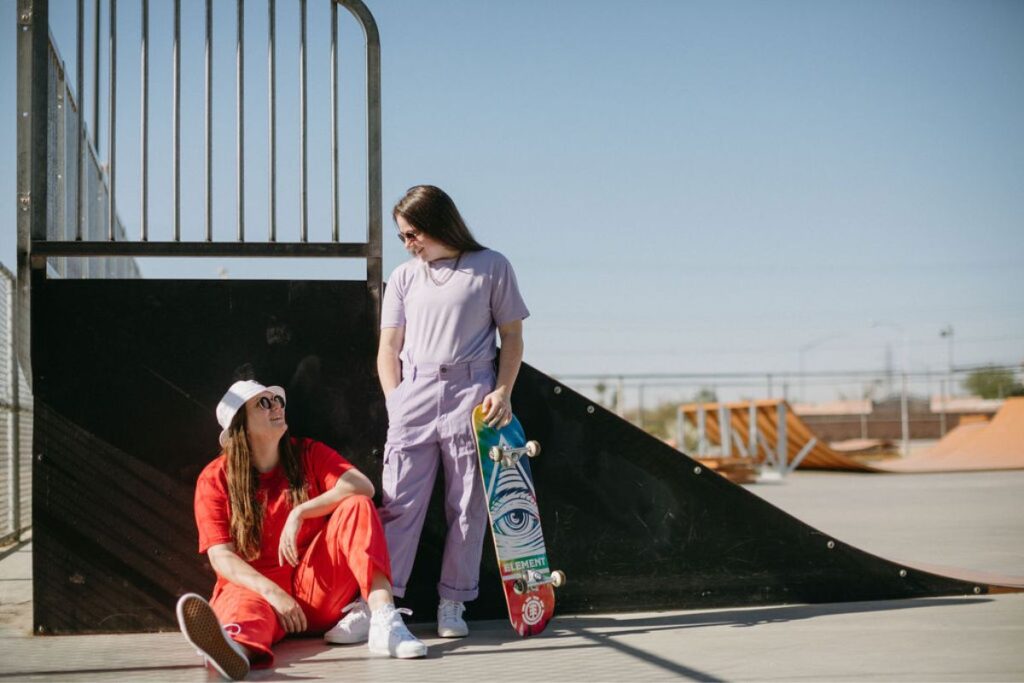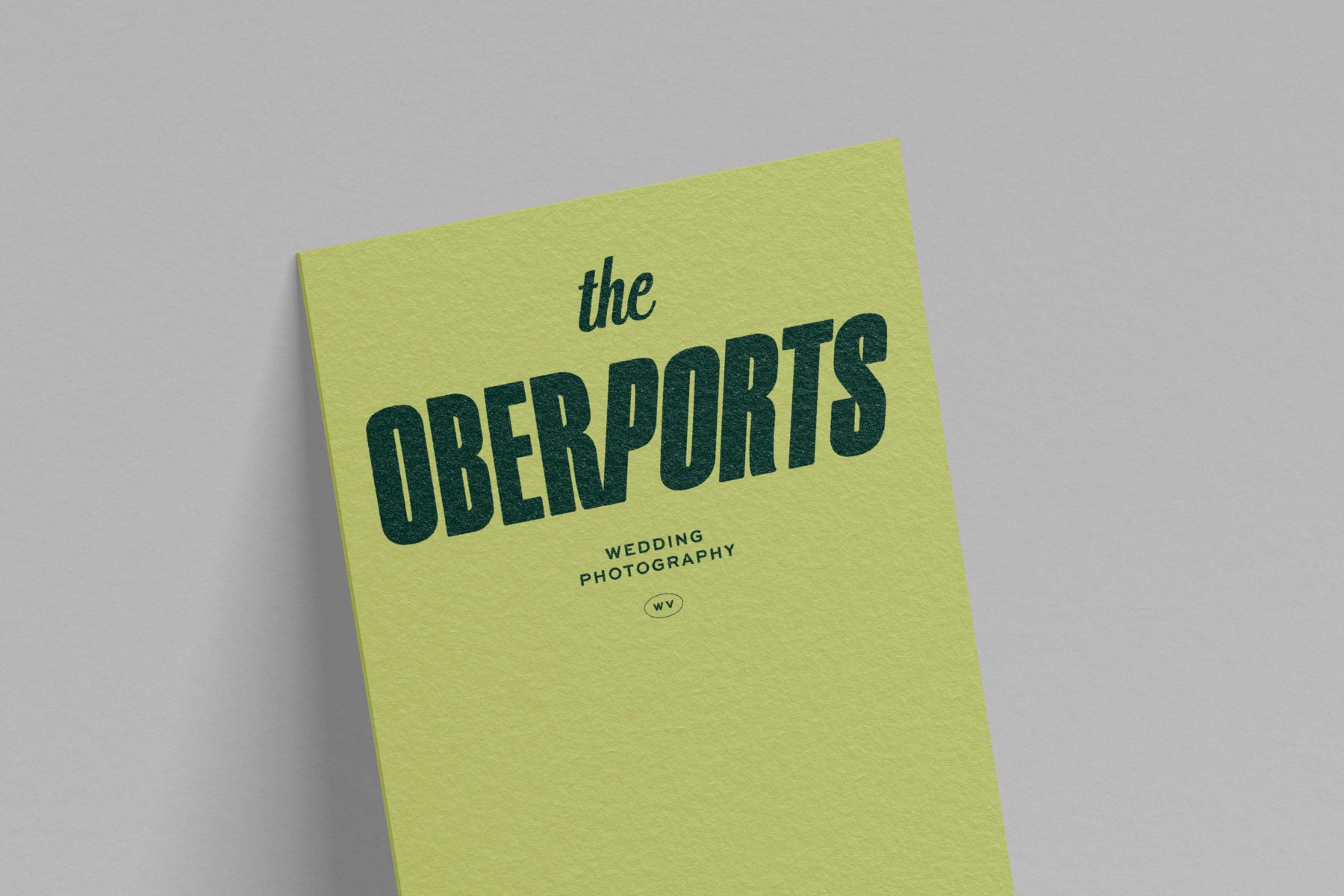Are you wondering how to add passive income for creatives to your business model? You’re in luck because today, we have special guest Liz Brindley to cover everything about it.
Passive income is a great way to make more income in your business without doing a lot of one-to-one work. However, it can take a lot of work upfront. That’s why passive income expert Liz is with us to chat through some things to keep in mind when adding passive income avenues to your business.
Keep reading, or tune in below, to learn all about passive income for creatives.
Meet Liz, Passive Income Expert

Hey, I’m so stoked to be here. Thanks for having me on. So I’m Liz. I am an illustrator, artist, and creative business coach for women who are at the beginning stages of their business.
My home base is usually New Mexico, but right now, I’m on the road full time, so I’m currently in North Carolina for the spring season.
This post is written from Liz’s POV from the podcast episode above.
What is passive income?

So I think the most common way that passive income is often described is by making money while you sleep. Like, we’ve all heard that thrown around a lot. There is truth to that. But more simply, passive income is doing a lot of work up front that can pay off continuously over time.
So what that can look like is how income can run in the background in your business over time for work that you’ve done in the past. That might be through an online course, that might be through templates, but it’s really a great way to just support you and your business in slower seasons, seasons where maybe you don’t have as much energy.
It can just be a really great way to supplement your income in your creative business over time.
I don’t want the make money while you sleep to get too bad of a rep because once you’ve done the work, like it is true, you can get sales while you’re resting, while you’re sleeping and taking time off, but the misconception around that is that no work is required. So it’s definitely a balance 100%.
What’s the biggest benefit of passive income?

I think it really comes to utilizing your energy in the best way possible as a creative. Our energy with creativity can ebb and flow. So I think one of the biggest benefits for creatives, specifically to having passive income, is that it gives you more freedom in your life, it gives you more freedom in your business.
This is to really follow your creative energy and to take that downtime and rest, which is where so much of our creativity gets refueled. It can also really balance out your business.
So if you’re doing a lot of one-to-one work, like if you’re a web designer or I do illustrations that are custom for clients, when you’re doing a lot of that work, passive income can just give you more freedom to take on projects that are aligned for you, as well as balance out some of the slower season s when clients aren’t booking in as often.
So, yeah, it can just be a really great way to add diversity in your income streams in what I call your creative business ecosystem and give you that freedom to really listen to your creative energy and follow the ebbs and flows that come with it.
As creatives, we have so many ideas, so it can be a great way to kind of test out new ideas and incorporate different projects to be working on in your business as well.
What are some ways that creatives can add passive income into their business?

There are so many ways to add passive income, and oftentimes the immediate thing that’s talked about, the immediate thing that’s thought about is a course, which is one of my favorites. But it doesn’t have to be that.
As a creative, I would recommend looking at courses as a potential passive income stream. But you could also create templates that you sell as downloadable PDFs that people can edit themselves. You could create print-on-demand art products.
So if you’re an artist who’s creating originals, could you turn that into prints? Could you turn that into greeting cards? Could you turn that into products? And rather than doing the inventory yourself, could you work with a print-on-demand company that prints it for you and ships it for you? I do that in my business. Highly recommend it.
You could also look at licensing for your artwork. So the best way to describe that is basically when a company rents your artwork for certain products for a certain period of time.
And what that can look like is essentially, if you’ve made one piece of artwork, then multiple companies in different industries could rent that artwork for their products, and you could continue to make money off of it even after you made it initially. So that’s just a great way to continue making passive income off of one work of art.
You could also, rather than doing like a full-fledged video course, you could do audio courses, you could do many tutorials that people could purchase to download. There are just infinite ways to really look at how you could incorporate passive income into your creative business related to your knowledge, your skill set, what you’re passionate about, what you want to be seeing in the world.
How should someone decide what form of passive income should be added to their creative business?

I think it can be the classic case of overwhelm. When there are so many ideas and options for creatives, we often get overwhelmed by all the potential, which is so great that there’s that abundance.
But really, when you’re thinking about what to start with, I encourage creatives to look at kind of what’s the lowest hanging fruit because when you’re starting out with passive income, there’s a lot of excitement, but there can also be a lot of learning curves that come with it.
Especially because there’s that myth that no work is required, but there is a lot of upfront work that’s required to get everything underway.
So when you’re thinking about that, really look at your current creative skill set, look at your current creative business, and ask yourself what is super close to home to you? Like, what do you use every day? Is it a template? Is it a work of art that you would want to repurpose and resell? Is it a skill set that you have? Is it the knowledge that you have that you could offer in a course? What do you know really well? What do you use every week, every day that you could easily repurpose that would help somebody else?
So that would be the first thing I would recommend is what you can start with that feels like a lower lift when you don’t have to reinvent the wheel, but also thinking about kind of the match-up between you and your ideal client. So really look at what you have to offer, what skill set you have to offer, and then what your people need or what they often ask you for.
For example, in my business, I do a lot of courses as passive income, and a lot of those course topics come from what my customers want to see, and what they want to learn. So I have a lot of courses on mindset. I have a course on how to create a course because I was just paying attention to what my people were asking about and how I could use what I have to create that for them.

Those would be the two things I recommend. Asking your audience is such a valuable tool to kind of work out what’s going to be best for them, and what’s going to be best for you. Because at the end of the day, you can create something that you want, but if nobody else actually wants it, you’re going to be wasting your time you could have just tweaked it a little bit, and everyone would have been so excited for it.
That really helps reduce the overwhelm and increase your unconfidence as a creative. Because if you have a list of eight ideas like you’re saying, you can just pull on that in your Instagram stories, and that’ll help you narrow it down.
Because one of the things I do often see is sometimes there is that discouragement when creatives launch their passive income product. It’s the very first passive income product, and it doesn’t sell. But that might be because it wasn’t the right timing. It might be that the marketing wasn’t the best around it, or it might be that your audience didn’t want it.
It doesn’t necessarily mean that passive income doesn’t work, but that’s the conclusion I often see get made. And so just really, the more upfront work you can do with that market research, with understanding what your people need and want, the better off you’ll be with clarity on what to offer first.
What are some common misconceptions about passive income for creatives?

One is that what we’ve already mentioned, that there’s no work required. I think the passive part gets the most of the spotlight, understandably, because we all want more freedom in our schedules. But that’s a big myth, is that no work is required. Another big myth is that it doesn’t work at all. And then the third myth that’s pretty big, or has been big, is it’s a get-rich-quick approach to business.
So I can dig into each of these a little bit more, but for that first one that we touched on of no work is required – not true. But your work upfront pays you over time when you can keep that mentality in mind, when you’re approaching a passive income stream in your creative business, just remembering that the work up front is going to be worth it in the long term.
So it is a heavy lift. It is a lot of effort at first, but that can pay off over time. So just as an example of that, I started teaching on Skillshare in 2019, and I published my first class on there in February of that year.
And I still get payments from that class; I still get students in that class, and I haven’t touched it since I made it. It’s not the shiniest production, but it still pays me. It still pays off from all of the upfront work I put into it.
Also, keep in mind that if you’re creating courses or if you’re creating templates, it’s likely that the first one you do will be one of the bigger parts of the learning curve. So the more you do that, the more you create in that realm, the easier it will get in terms of process and systems over time as well.
The first lift can often be the heaviest, so don’t get discouraged if you’re finding that and feeling like, I thought this wasn’t any work, like I thought I didn’t have to do any work for passive income, upfront work for long-term reward. That’s the first one.
The second myth is that it doesn’t work at all. I touched a bit on this too, but it can work over time. Often what I’ve seen in my own business and with clients that I work with is that passive income streams have this snowball effect where you might not see much return right away, but you’ve created an asset in your business that you can continue to market, you can continue to share, and you can continue to sell.

The more people know about it over time, the more money it can generate. So it can all be this snowball over time. And so again, what I touched on earlier is that there can be this discouragement when you launch a new passive income product or passive income stream.
If you’re not getting people buying it, if you’re not getting people booking in, don’t feel discouraged because that doesn’t mean the product is necessarily wrong. You might just tweak the marketing, you might tweak the timing of when you’re sharing it or selling it, you might tweak who you’re talking to about it, or you might tweak the product itself.
Just remember that no’s or no sales doesn’t mean the passive income doesn’t work. It just means that tweaks need to happen to get it to work, and then it can work over time.
The third myth is the “get rich quick.” Everybody loves to talk about that. Everybody loves that ideal myth. But that’s also not true. Just like anything in life or in business, at least in my belief, good things take time.
It’s this snowball effect where over time, you can generate income in your business through the same product that you’ve created once. So you might not get rich quickly from it, but over time, it can add wealth and abundance to your overall creative business ecosystem.
So if you’re not seeing the get-rich-quick results right away, don’t get discouraged. Usually, getting rich is not a quick process in business and takes a lot of time and intention. So just keep that in mind as well.
And one thing I’ll add here is how I talk to my clients about passive income in your business. When you look at your business as a creative ecosystem, as nature, I like to describe two forms of income in your business.
You have the waves, and you have the currents. So if you think about the ocean, the waves are what everybody’s obsessed with, right? That’s why we go to the beach. We want to see the waves crashing; we want to hear them. That’s the thing that’s really visual and vibrant. That is kind of your short-term main income that you bring in through your business.
So what this looks like in a service business is a lot of one-to-one work. That might be your web design projects, that might be your graphic design projects, that might be illustration projects coaching. But that’s really when you’re doing one-to-one trade.
You can bring in money often more quickly or more. There’s a quicker turnaround time on those projects in your business to bring that revenue in.

But what’s equally important and valuable is the currents in the ocean. Because you can’t see the currents, but when you’re out in the ocean, you can feel them, and they’re guiding the water, and they’re very powerful. The currents are really what passive income streams can be in your business.
What that means is that they just can take more time to develop. They can take more time to expand, and they can take more time to generate that revenue, but they play an equally important part as the waves.
When you can look at those two together in your overall ecosystem, over time, it’ll create a lot of balance for you.
Don’t compare yourself to other businesses
I think that’s really important to anybody listening is just having those managed expectations with anything you launch for the first time, especially passive income.
And really, how can you wrap in the expectation to be more like, what can I learn from this process? What can I incorporate? What can I learn? How can I really be aware as I launch this to take notes and to notice what works and what doesn’t, and how can I refine it over time to share a bit of personal experience with that?
A story I tell all of the time is when I did publish that first course on Skillshare in February of 2019, I was really intentionally wanting to build passive income into my business. And I remember two weeks after I published the course, I was sitting at my car mechanic getting an oil change, and I got an email from Skillshare that I’d made $9 off of the course.
There’s all this expectation presented that you’re going to make thousands of dollars off of your first passive income course. But when I saw that email, I was like, “$9. Right on. Let’s grow this. Let’s lean into this!”
And from there, my goal was to become a top teacher on my platform, which I’ve since done. But I really took what I learned from that first course, and I said, okay, let’s make an action plan to make these classes better.
How do I do better lighting? How do I do better audio? Because if you go back and watch that first class, it’s my beginner’s guide to fabric printing class on Skillshare. It’s rough in terms of production quality, and I was just using what I had on hand, but that was the baseline to improve over time.
So I think that it’s really great to have not only set expect expectations for what you would like to sell but expectations for what you want to learn from the process as well.
What advice do you have for a creative adding passive income to their biz?

There’s this principle in permaculture, which is a way of farming and gardening that takes nature’s design as inspiration to create ecosystems that flourish and sustain over time.
One of the principles of that style of farming and gardening is to start small and grow big, and that’s something that I really encourage my clients to remember in any area of their business.
So when you’re starting out with passive income, again, take the pressure off as you adapt to the learning curve and start with what you already have. That might be your current knowledge, that might be, again, a current template that you use and can resell or repurpose.
But even with that, start with the gear that you already have. Because what I see a lot of the times is if creatives choose that they’re going to create a course as their first passive income stream, they feel the pressure to go out and get the high-quality gear.
What that will do oftentimes is just intimidate more and create more roadblocks because then you’re learning a whole new gear skill set, not just how to create a course as a skill set. So I really encourage you to use what you already have.
When I made my first course, I was using my iPhone 5 as my video recorder and my plugin Apple earbuds for my microphone, and a stack of books for a tripod, and I had no lighting. You can really use what you have on hand to get started.
Any way that you can take the pressure to make it perfect off, even a little bit, will help you to get going. At the end of the day, it’s about the quality of the content and what you’re actually giving people. So yes, a nice camera might look good, or a microphone might sound good, but if you have that good quality content in your course, people are still going to want it and learn from it and come back for more.
Even though the quality of my first class wasn’t high-tech, I still get students commenting in there that it’s super helpful content for them, that they’re learning a lot, and that it’s the best fabric course they’ve taken for printmaking.
I think that’s something that we’re really fortunate to be in this day and age with business is that people really want the human side of things, and they want to connect with you and the learning more than just the high production quality. So that’s a really good reminder.
You only have to be one step ahead. And it’s really hard to see that sometimes because you’re so close to what you know, but that means you’re the perfect teacher and educator for people who are looking to learn that. So one step ahead is all you need to be.
How can someone learn more about adding passive income to their business?

I mentioned this a bit earlier, but I have a course, it’s called Press Publish, and it’s a five-week course to help you publish your first online course, which is a little meta, but it’s really what I wish I would have had when I made that first course.
For Skillshare, I outline everything from how to pick your course topic to how to make sure people will enroll in your course when you launch it, to marketing to gear, both now with what you have on hand and with what you can get in the future. How to organize your class content, how to organize your lessons.
There are bonus templates that you can get. It’s all in there for a streamlined production process. And so clients who have gone through that have published their first courses on Skillshare have gotten staff picks on there after taking Press Publish.
Final Thoughts: Creative Passive Income
No matter the medium of creativity you choose, it’s important to remember that passive income requires a lot of hard work and dedication upfront. Many creatives underestimate the amount of energy they need to put into their project before seeing any results.
With time and effort, however, you can turn your creative passion into a reliable source of income. It’s all about having a plan and putting in the hours!
Check these out next:
- 8 Best Passive Income Ideas for Creatives
- How to Set Up a CRM by Recycling Your Website Content for a Seamless Client Experience with Colie James
- How to Use Astrology for Business with Laura Quintero
- How to Plan a Brand Photoshoot as a Small Business Owner
- The Importance of Boundaries in Business
- Creator Brand Archetype Examples for Photographers - October 28, 2025
- Everyperson/Everyman Brand Archetype Examples for Photographers - October 9, 2025
- Jester Archetype Brands: Examples for Photographers - September 23, 2025
8/10/23
Published On:
Krystianna Pietrzak






